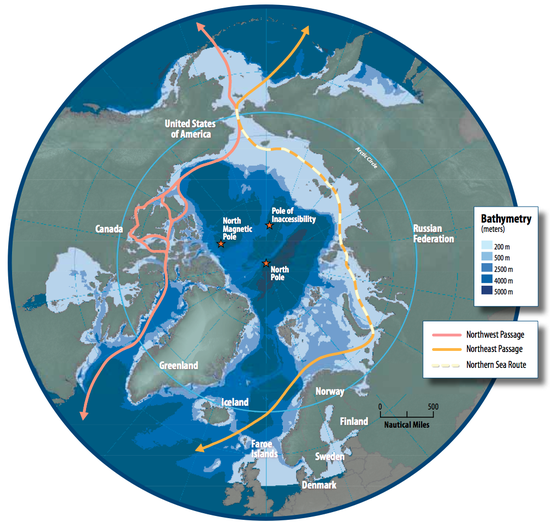
Arctic shipping routes are the maritime paths used by vessels to navigate through parts or the entirety of the Arctic. There are three main routes that connect the Atlantic and the Pacific oceans: the Northeast Passage, the Northwest Passage, and the mostly unused Transpolar Sea Route.[2] In addition, two other significant routes exist: the Northern Sea Route, and the Arctic Bridge.[1][2]
To connect the Atlantic with the Pacific, the Northwest Passage goes along the Northern Canadian and Alaskan coasts, the Northeast Passage (NEP) follows the Russian and Norwegian coasts, and the Transpolar Sea Route crosses the Arctic through the North Pole.[2]
The Arctic Bridge is an internal Arctic route linking Russia to Canada, and the Northern Sea Route (NSR) trails the Russian coast from the Bering Strait to the East, to the Kara Sea to the West.[2]
The main difference between the NSR and the NEP is that the latter extends into the Barents Sea and provides access to the port of Murmansk, the largest Russian Arctic port, and to the Atlantic. Given that the NSR constitutes the majority of the NEP, some sources use the terms NSR and NEP interchangeably.[3]
- ^ a b Cite error: The named reference
AMSA 2009was invoked but never defined (see the help page). - ^ a b c d Cite error: The named reference
Østreng 2013was invoked but never defined (see the help page). - ^ Cite error: The named reference
Buixade Farre 2014was invoked but never defined (see the help page).
